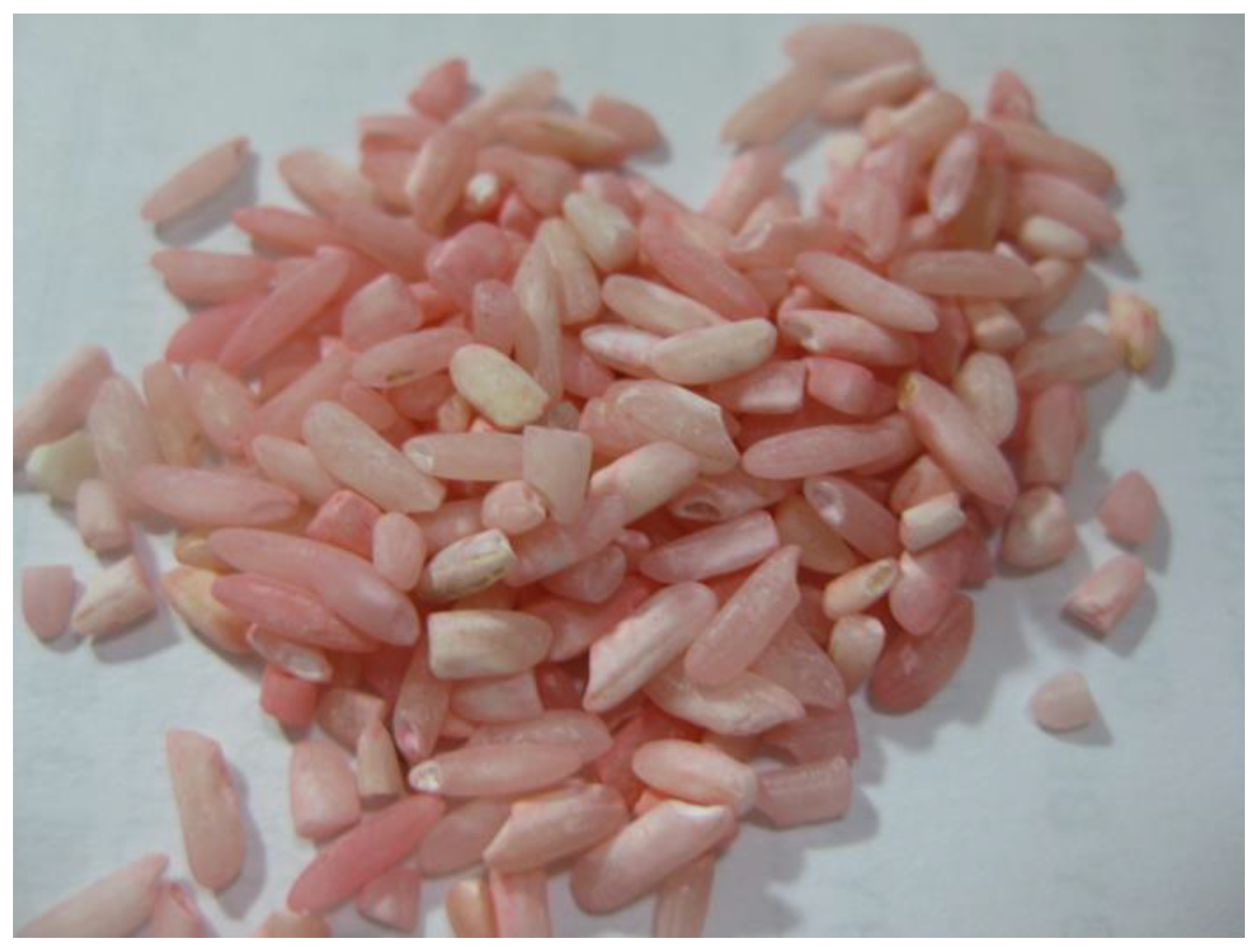Rat Bait, Not Healthy Rice!
Abstract
1. Introduction
2. Case Report
3. Discussion
Author Contributions
Funding
Institutional Review Board Statement
Informed Consent Statement
Data Availability Statement
Acknowledgments
Conflicts of Interest
References
- King, N.; Tran, M.-H. Long-acting anticoagulant rodenticide (superwarfarin) poisoning: A review of its historical development, epidemiology, and clinical management. Transfus. Med. Rev. 2015, 29, 250–258. [Google Scholar] [CrossRef] [PubMed]
- Vindenes, V.; Karinen, R.; Hasvold, I.; Bernard, J.P.; Mørland, J.G.; Christophersen, A.S. Bromadiolone poisoning: LC-MS method and pharmacokinetic data. J. Forensic Sci. 2008, 53, 993–996. [Google Scholar] [CrossRef] [PubMed]
- Bidny, S.; Gago, K.; David, M.; Duong, T.; Albertyn, D.; Gunja, N. A validated LC-MS-MS method for simultaneous identification and quantitation of rodenticides in blood. J. Anal. Toxicol. 2015, 39, 219–224. [Google Scholar] [CrossRef] [PubMed]
- Horak, K.E.; Fisher, P.M.; Hopkins, B. Pharmacokinetics of anticoagulant rodenticides in target and non-target organisms. In Anticoagulant Rodenticides and Wildlife; Springer: Cham, Switzerland, 2018; pp. 87–108. [Google Scholar]
- Lo, V.M.; Ching, C.K.; Chan, A.Y.; Mak, T.W. Bromadiolone toxicokinetics: Diagnosis and treatment implications. Clin. Toxicol. 2008, 46, 703–710. [Google Scholar] [CrossRef] [PubMed]
- National Center for Biotechnology Information. PubChem Compound Summary for CID 54680085, Bromadiolone. Available online: https://pubchem.ncbi.nlm.nih.gov/compound/Bromadiolone (accessed on 30 November 2022).
- Long, J.; Peng, X.; Luo, Y.; Sun, Y.; Lin, G.; Wang, Y.; Qiu, Z. Treatment of a long-acting anticoagulant rodenticide poisoning cohort with vitamin K1 during the maintenance period. Medicine 2016, 95, e5461. [Google Scholar] [CrossRef] [PubMed]
- Chu, Y.J.; Lin, J.H.; Hung, D.Z. Oral administration of injectable vitamin K1 in brodifacoum intoxication. BioMedicine 2022, 12, 47–49. [Google Scholar] [CrossRef] [PubMed]

| Patient 1 * | Patient 2 | Patient 3 | Patient 4 | Patient 5 | Patient 6 | |
|---|---|---|---|---|---|---|
| Age | 58 | 32 | 54 | 32 | 29 | 27 |
| Sex | M | M | M | M | F | M |
| Hematuria | + | + | + | - | + | + |
| Gum bleeding | + | + | − | + | + | + |
| GI bleeding | + | − | − | + | − | − |
| Ecchymosis | + | + | + | + | − | + |
| Conjunctival hemorrhage | − | − | + | − | − | − |
| PT/INR (Normal 0.8–1.2) | Unclotted | Unclotted | Unclotted | 17.5/1.55 | 37.7/3.31 | 25.1/2.21 |
| SBL | 74.5 | 6.17 | 8.94 | 7.5 | 3.9 # | 8.0 |
| Total dose of Vit. K1 & (mg), IV/Oral | 130/50 | 120/100 | 110/50 | 120/100 | 50/0 | 40/0 |
Disclaimer/Publisher’s Note: The statements, opinions and data contained in all publications are solely those of the individual author(s) and contributor(s) and not of MDPI and/or the editor(s). MDPI and/or the editor(s) disclaim responsibility for any injury to people or property resulting from any ideas, methods, instructions or products referred to in the content. |
© 2023 by the authors. Licensee MDPI, Basel, Switzerland. This article is an open access article distributed under the terms and conditions of the Creative Commons Attribution (CC BY) license (https://creativecommons.org/licenses/by/4.0/).
Share and Cite
Lee, K.-I.; Lin, J.-H.; Chu, Y.-J.; Deng, J.-F.; Chu, W.-L.; Hung, D.-Z. Rat Bait, Not Healthy Rice! Toxics 2023, 11, 60. https://doi.org/10.3390/toxics11010060
Lee K-I, Lin J-H, Chu Y-J, Deng J-F, Chu W-L, Hung D-Z. Rat Bait, Not Healthy Rice! Toxics. 2023; 11(1):60. https://doi.org/10.3390/toxics11010060
Chicago/Turabian StyleLee, Kuan-I, Jing-Hua Lin, Yen-Jung Chu, Jou-Fang Deng, Wei-Lan Chu, and Dong-Zong Hung. 2023. "Rat Bait, Not Healthy Rice!" Toxics 11, no. 1: 60. https://doi.org/10.3390/toxics11010060
APA StyleLee, K.-I., Lin, J.-H., Chu, Y.-J., Deng, J.-F., Chu, W.-L., & Hung, D.-Z. (2023). Rat Bait, Not Healthy Rice! Toxics, 11(1), 60. https://doi.org/10.3390/toxics11010060







